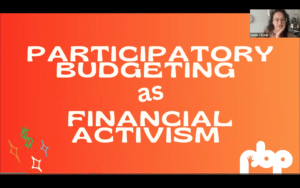If you’re like me, you might be experiencing some anxiety over the state of democracy in the US. This past October, I took the chance to speak at the annual International Observatory on Participatory Democracy (IOPD) conference and turned it into a small tour of democratic innovations happening across the world. Decidim Fest was also taking place around the same time a hop and a skip away from the IOPD convening. I found a lot of energy and hope in both the number of people working on building our shared democratic resilience, and in the rich conversations these convenings facilitated – many of which have been largely absent from our mainstream news outlets. Read on for a tour of democratic innovations happening around the world to give you hope right now!
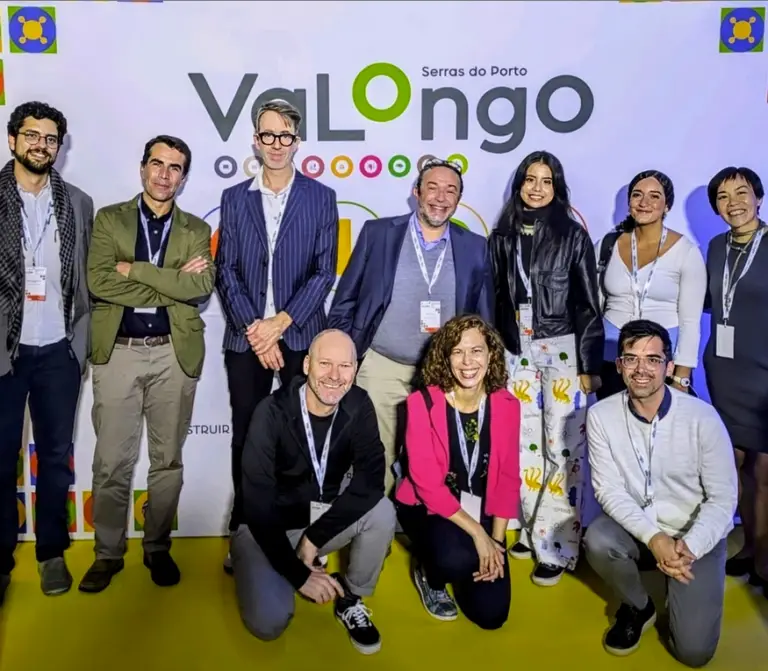
IOPD Conference
This year, the 23rd International Observatory on Participatory Democracy (IOPD) conference took place in Valongo, Portugal and convened over 350 participants from 43 countries, giving people attending the chance to choose their own adventure according to their interests. Over the course of 3 days, participants had the choice of attending 39 different sessions including panels and workshops. The theme of the conference was centered on how to build democratic resilience against populist threats by building participatory communities. You can read the IOPD’s own blogpost on their conference. I’ve also captured what I learned from the sessions we attended below!
1) Current opportunities & threats to democracy
Threats: Dutch political scientist and expert on political extremism Cas Mudde argued that one of the biggest threats to democracy in the 21st century is “undemocratic neoliberalism,” referring to the way services that were previously government responsibilities have been privatized – such as healthcare and public transportation. Not only are many of these services now outside of the democratic arena, which means they operate within the logic of the market as opposed to the common good, but Mudde argues this also has a psychological impact: it tells people they are not important. Mudde also named the erosion of media outlets as a threat due to the financial control elites exert over them, which magnifies their minority views and creates the narrative that these are views of the majority of people.
Opportunities: Mudde thinks giving people the possibility to vote on key decisions such as whether their public services are privatized would help build our democratic resilience. Mudde also sees the local level as pivotal to bridge divides in our increasingly polarized society, arguing that when people meet to fix a park they do not care about their political orientation. They are there as neighbors to fix the park. Mudde thinks once you work together as neighbors and have the opportunity to connect about one issue, you will be more likely to discuss other topics, including those you might not agree on. That’s why Mudde argues “democratic resilience needs to be built from the bottom up.”

2) Participatory democracy was defined broadly
While we tend to frame participatory democracy as a handful of specific tools that allow the people to make decisions (i.e., participatory budgeting, citizen assemblies, etc.), speakers from all over the world shared a range of projects that foster resident participation.
There were lots of notable projects (big and small) that involved deep resident engagement! Below are a few that expanded or challenged our understanding of participatory democracy tools:
- Secretary General of the Governorate of Valle del Cauca’s (Columbia) shared what they have done through their Open Government dialogues;
- The Mayor of the Autonomous Decentralized Province of Cotopaxi (Ecuador) discussed how they have engaged their residents in the construction of public works. Engaging residents in building the public infrastructure they will use (known as the Indigenous practice of “La Minga”) has been used as a way to eliminate corruption in government and build trust.
- Sheba Najmi shared how the Code for Pakistan Civic Innovation Fellowship improved health safety in Khyber Pakhtunkhwa, Pakistan by pairing skilled residents, government officials, and community members in a co-creation process. In a context where there were limited drug inspectors to ensure the drugs residents purchase are safe and genuine, the fellows partnered with the Health Department to build a platform that would help combat the issue of counterfeit medicine. The fellows’ platform helped pharmacies digitize their certifications, allowing residents to look up their pharmacy’s licensing.
Najmi argues that this framework of collaboration between people and government builds democratic resilience since it makes government more effective, transparent, innovative and accountable.
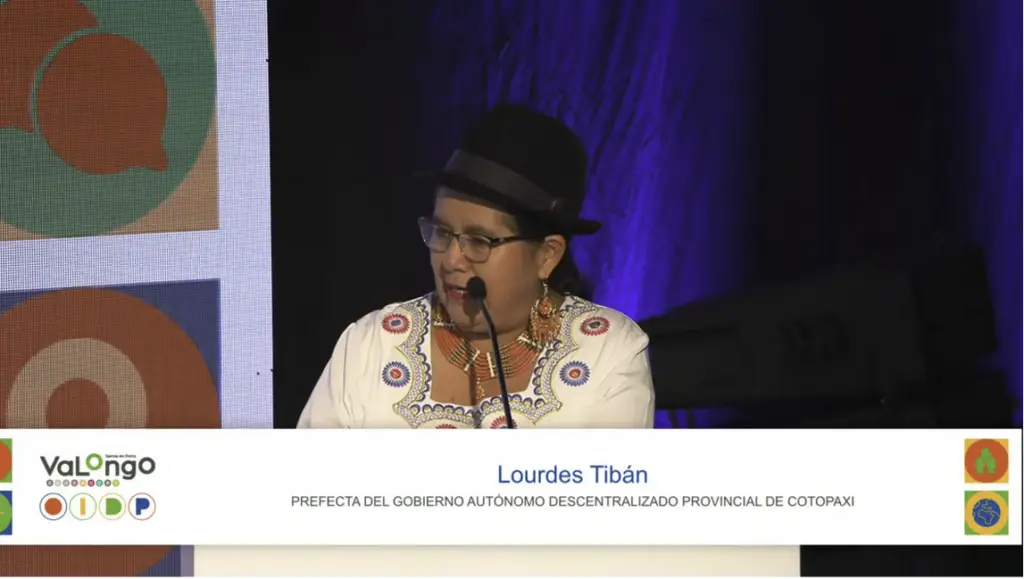

3) There are initiatives centering youth participation all over the world
Research:
- Secretary General of the United Cities & Local Governments (UCLG) Emilia Sáiz kicked off the first panel on youth participation by describing UCLG’s project working alongside universities to compile evidence on the impact of youth engagement in policy-making & democracy.
- In our own panel on youth engagement with fellow members of People Powered, Zoë Wilkins shared sample learnings from their Building Inclusive Democracies program which supported the capacity of organizations based in three global regions to make participatory decision-making more inclusive of marginalized groups – including youth. Organizations in these three regions shared what was working and not working in their youth programming. You can now enroll in a free online course to learn about best practices to involve youth that came out of this research.
Youth Caucus with global representation: Emilia Sáiz also announced the UCLG’s youth caucus which is self organized and has representation from different countries that informs UCLG’s decisions.
Collaboration between student associations and government: Diogo Silva, a Youth Council member in the municipality of Valongo (Portugal), shared his trajectory getting involved in the youth municipal assembly, which started through his involvement in his student association at age 13. Silva noted that many of the projects his student association wanted to develop were only possible with the help of the municipality. Trying to solve a problem regarding digital exams, he mobilized his student union. All student unions in the municipality helped develop the project, after which Silva got involved in the municipal youth assembly. Silva shared that this collaborative process helped the youth involved understand their role in society and has shaped Valongo. Since then, the youth Municipal Assembly has collaborated with the youth department in Valongo, which now has a youth PB process.
Building participatory structures at early ages: PB with children
Coglobal’s Andrés Falk shared different models of participatory budgeting taking place in schools with children in Spain. These models ranged from instances in which municipalities invite schools to submit their facilitation plans to help design the next participatory budgeting process, to models where students get involved in the management of the PB process. You can read more about what Coglobal has learned about engaging children in participatory democracy in ‘Educating For Democracy.’
Paid youth fellowships as a way to meaningful engage youth in democracy
I made a case for engaging youth in our democracy through paid youth programs that employ youth and give them a dedicated leadership role in participatory processes happening in their local contexts. In the panel, I shared examples of ways youth have become engaged in their democracy, meaningfully impacted their communities, and obtained professional development opportunities through ‘The People’s Fellowship’.
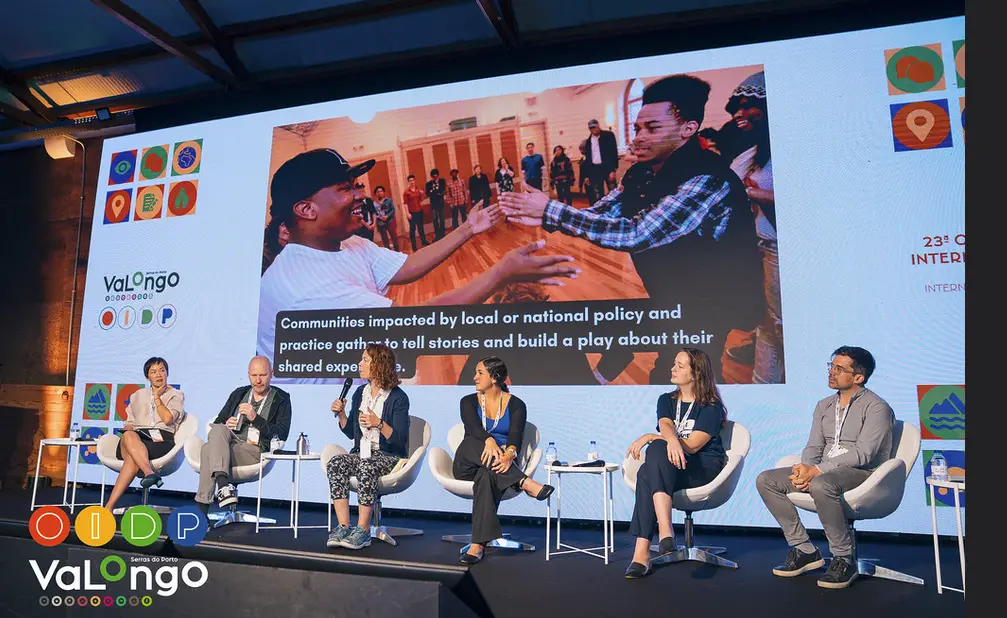
4) Harnessing joy and creativity as powerful tools for democratic engagement
Legislative theater practitioner Katy Rubin and artist, educator and organizer Aaron Landsman led a joyful, interactive workshop for participants to explore the types of community issues legislative theater could help solve. Through this immersive experience, we picked an issue we were interested in solving, acted out the intricacies of the issue, and learned about real life policy change that has happened through legislative theater. Participants not only collaborated and laughed, but also experienced the power of framing questions carefully to meaningfully engage people in their democracy & analyze the roots of specific problems. To learn more about legislative theater and where it’s being used today, visit The People Act.
There is so much movement happening to strengthen democracy across the world. I hope this compilation of democratic practices gave you a little hope and inspiration to keep connecting and engaging. Stay tuned for Part 2 of my tour covering Decidim Fest 2024!
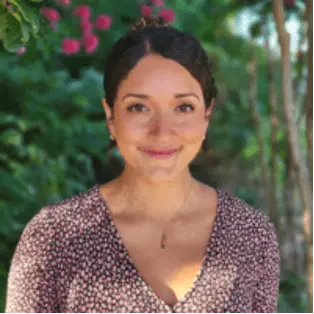
Isabel Luciano
With a decade of experience helping governments and institutions engage communities that have been excluded from traditional decision-making processes in allocating public funds, Isabel has dedicated herself to opening access to our democracy. She spent the first half of her career helping cities and institutions in North America implement participatory budgeting (PB). More recently, she has been focused on creating youth programming that equips and resources youth to lead their own engagement innovations in their city’s PB process. She is currently applying the insights she’s gathered from this work to develop PBP’s training curriculum and help community members build PB processes that are responsive and tailored to the unique needs of their own contexts.



